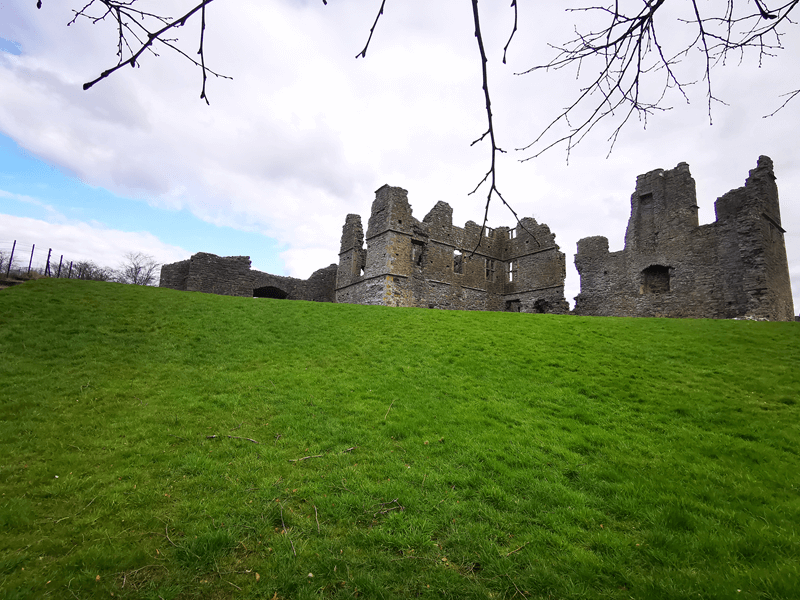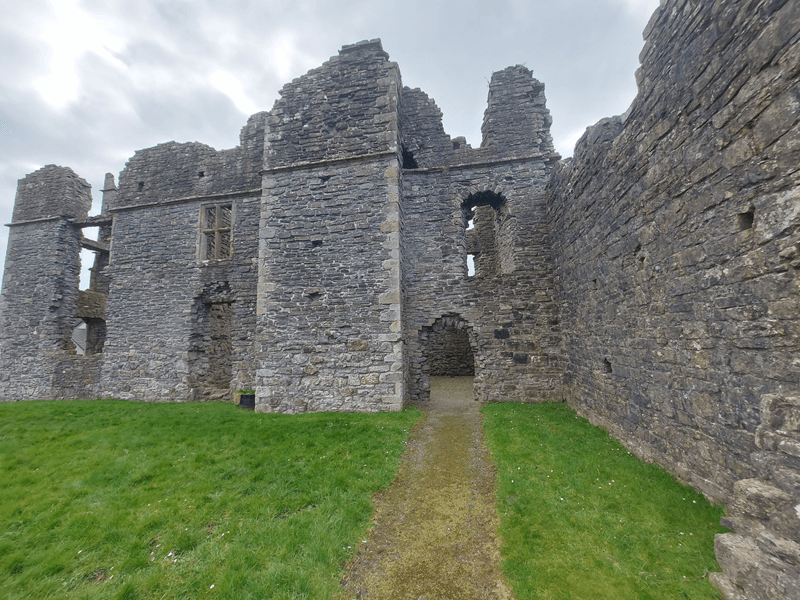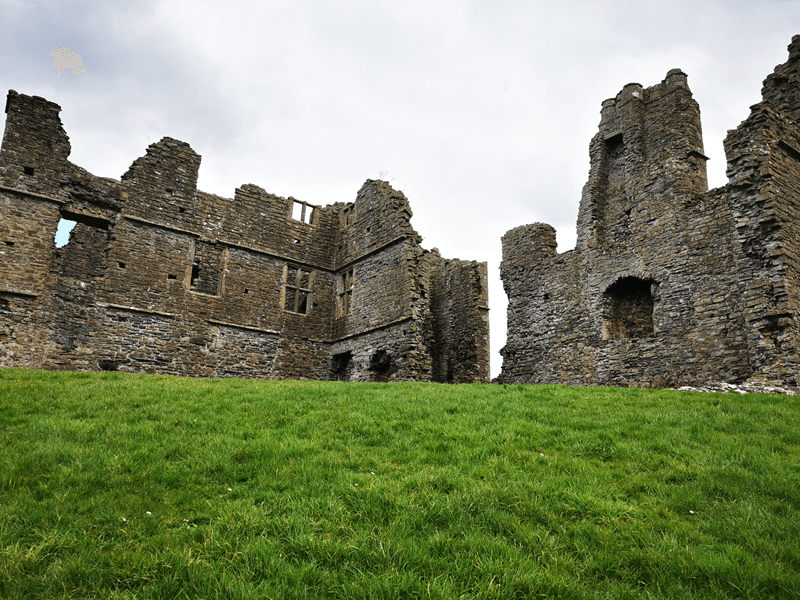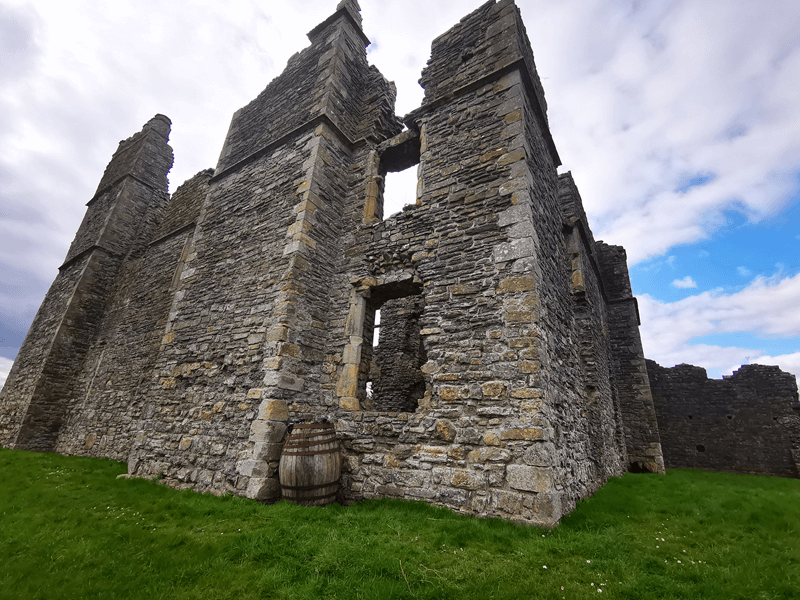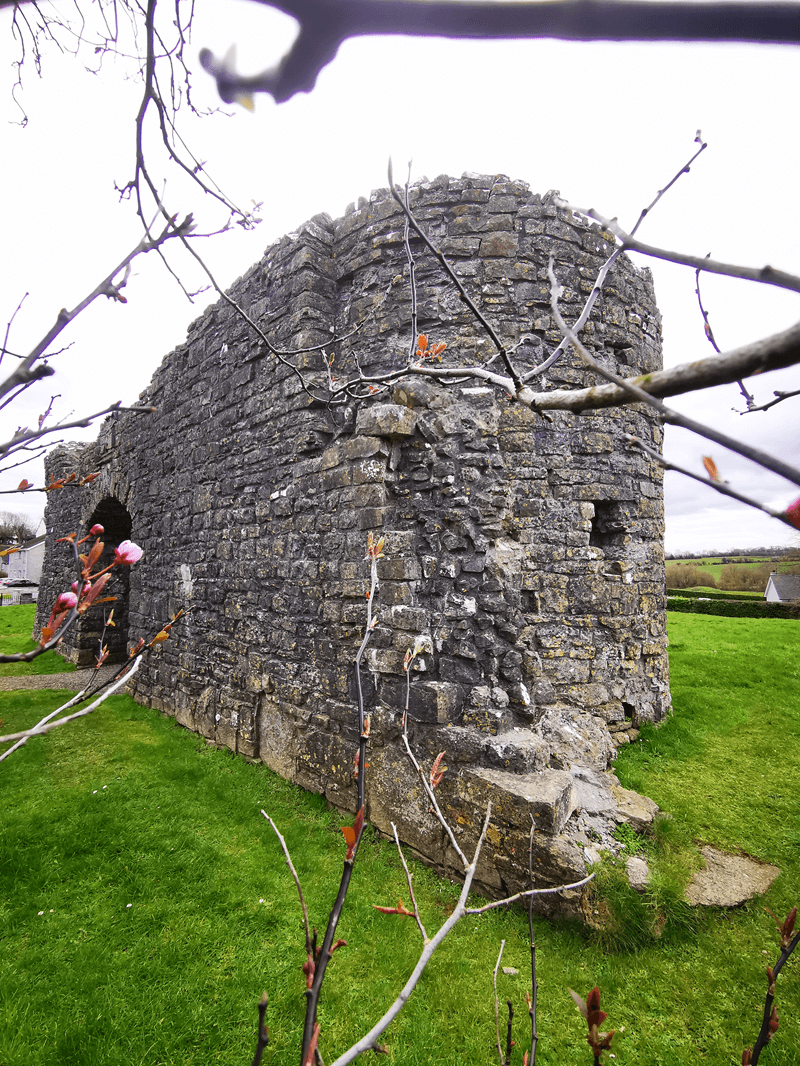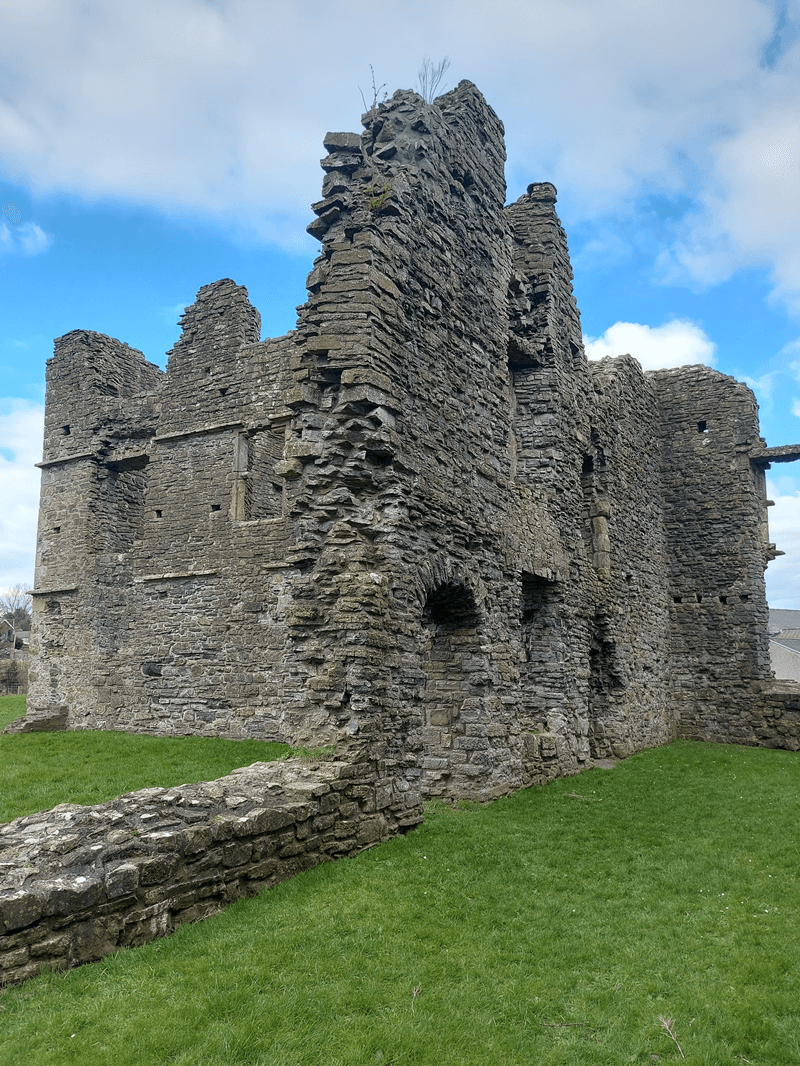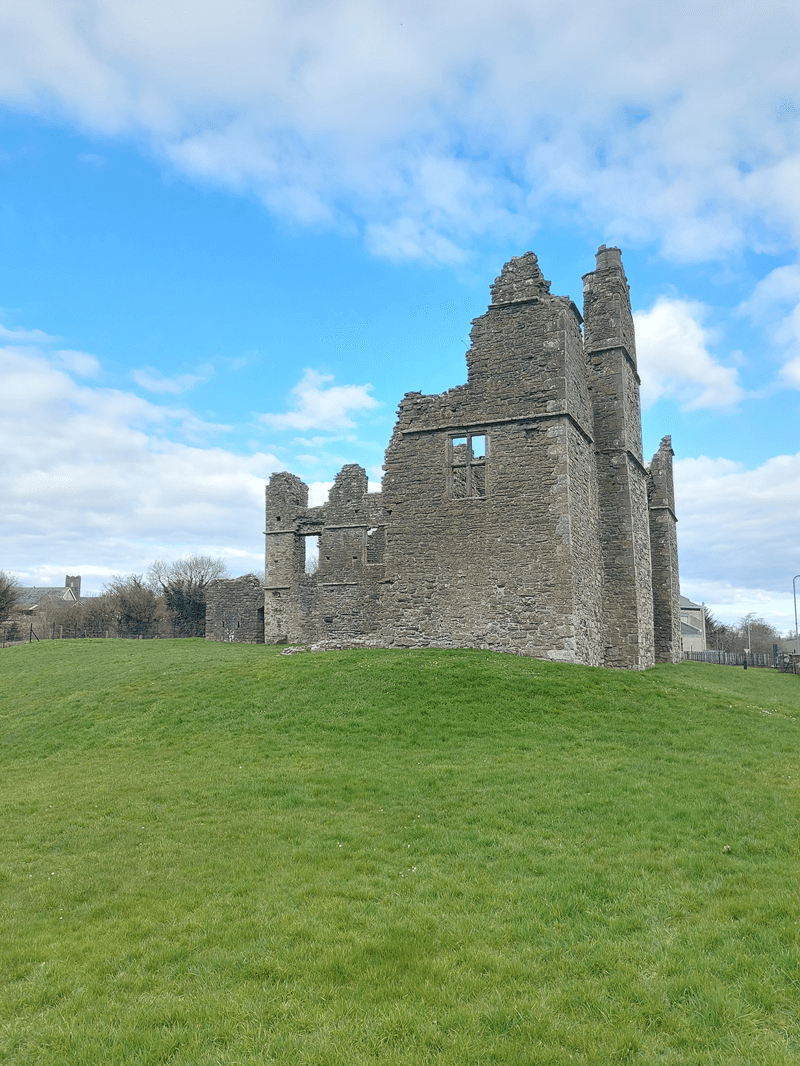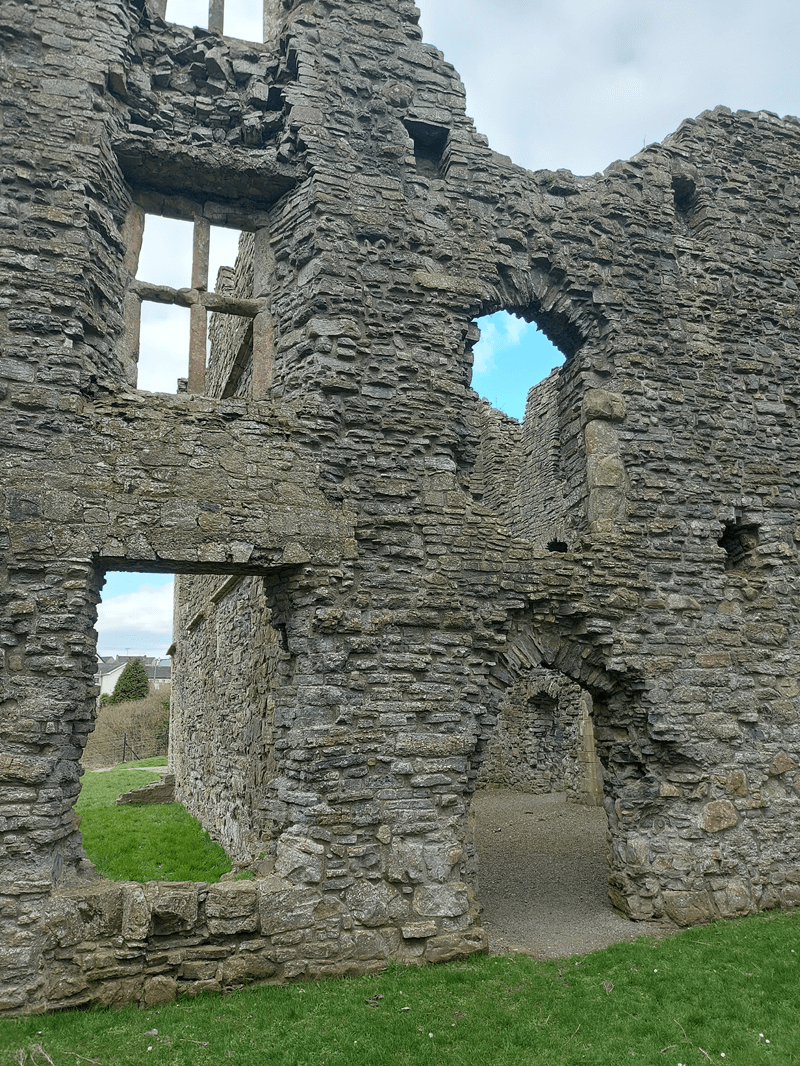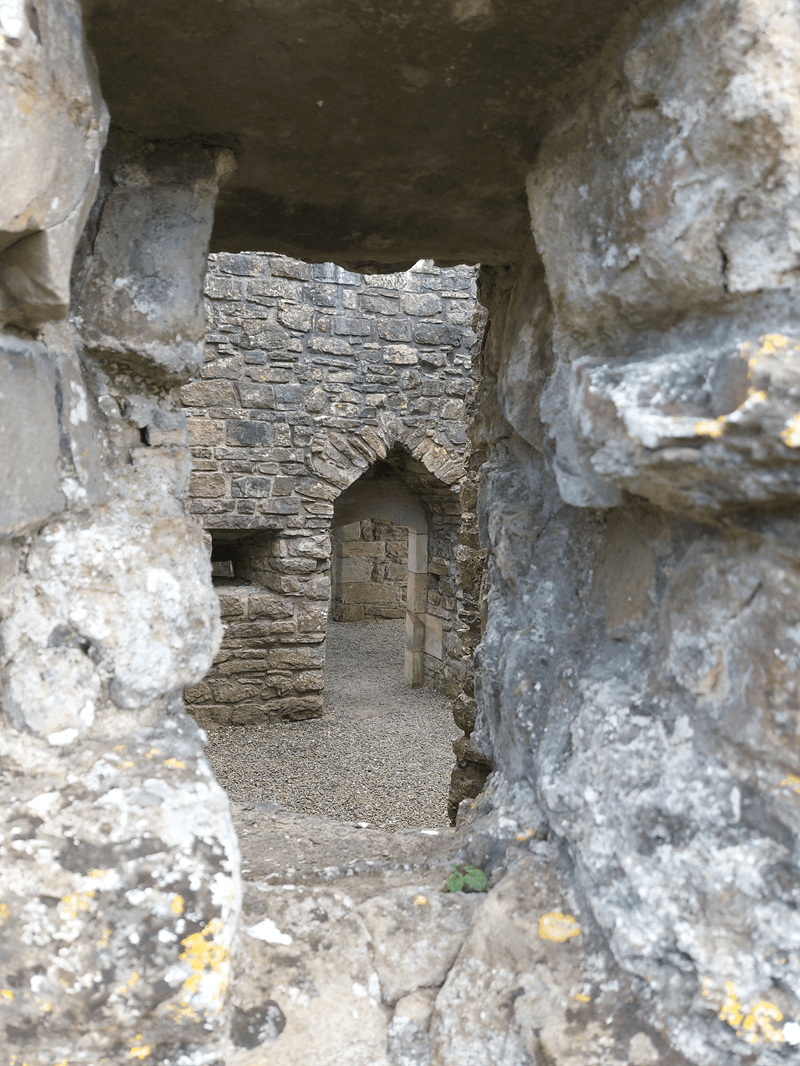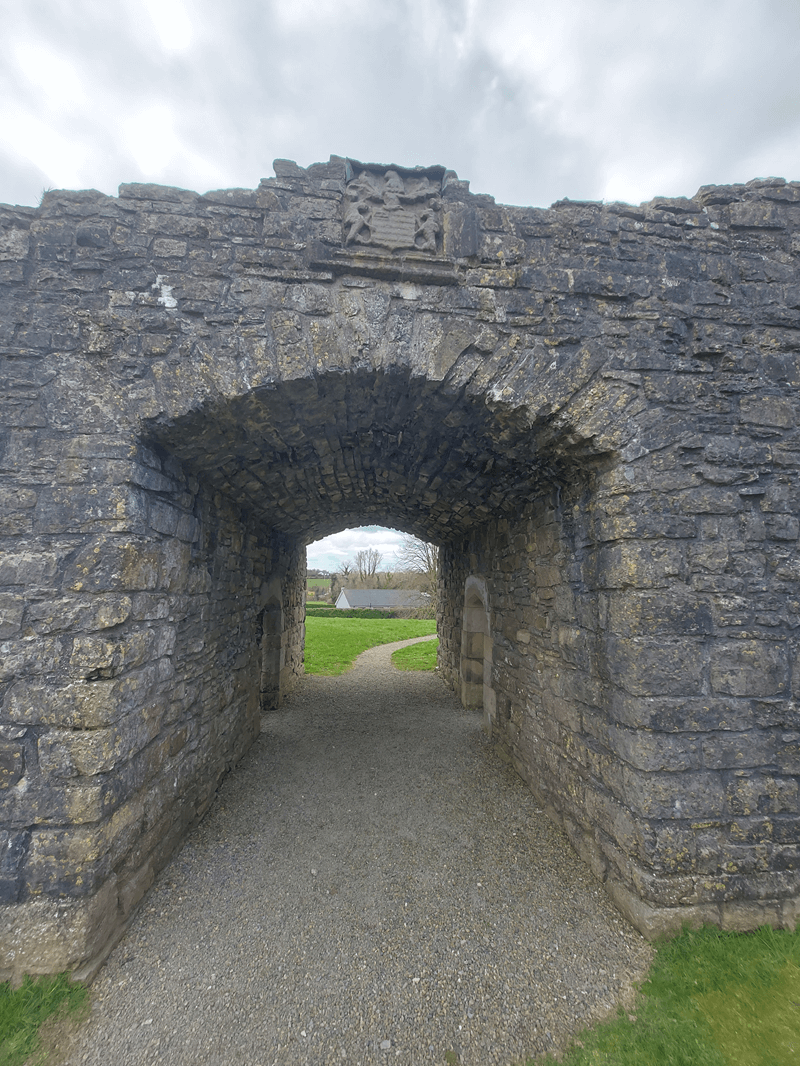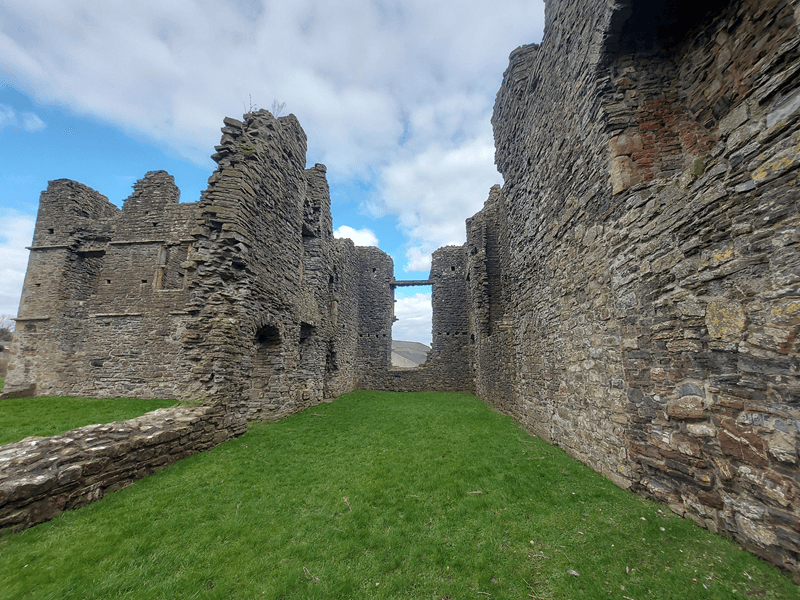History
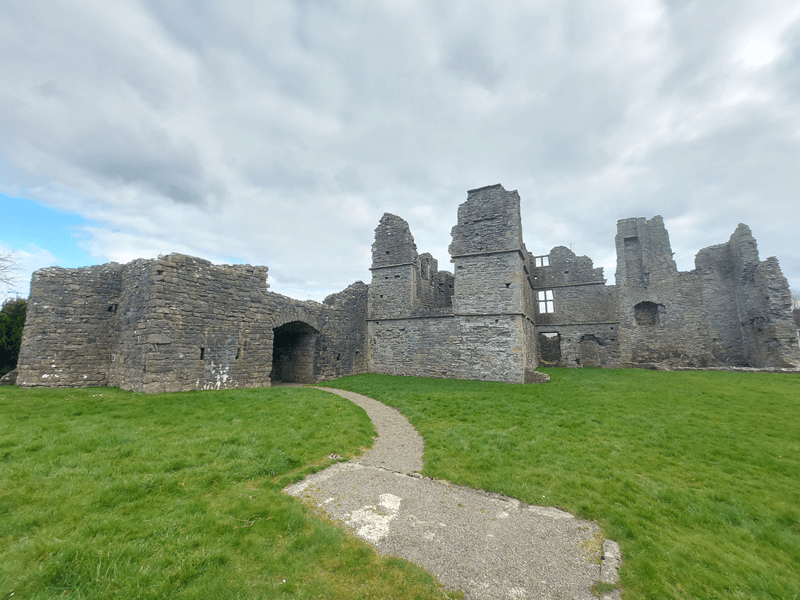
Located in the village of Castlecaulfield, this beautiful ruined manor house and bawn was built between 1611 and 1619 for Sir Toby Caulfield (1565–1627), to whom King James I granted about 1000 acres called Ballydonnelly (or O’Donnelly’s town) [1], during the Plantation of Ulster, soon after the Flight of the Earls [1-5]. In more detail, Sir Toby Caulfeild, an English soldier later created the 1st Lord Caulfeild, Baron of Charlemont, established here a settlement with 15 English families, which then developed into the village of Castlecaulfield [3]. According to [4], the site was expanded by the second Lord Charlemont, who added the gatehouse with towers and a keep.
Before the arrival of Sir Caulfield, this land belonged to the O’Donnellys (Ui Donnghaile), a family loyal to the O’Neills, who resided in a fort a few miles west of the castle [2].
As Castle Caulfield was not fortified, during the Irish Rebellion of 1641, Patrick Modder “the gloomy” O’Donnelly set fire to the mansion, as it can be noticed on some of the building’s masonry [3, 6]. After that, the Caulfeilds repaired and reoccupied the Castle, where they resided until at least the 1670s [3].
In 1670 circa, when the house was occupied by William Caulfeild, probably Toby’s nephew, the courtyard was used by Saint Oliver Plunkett for ordinations and, in the late 17th century, also John Wesley preached in front of the entrance gate of the house, which had been left abandoned since the late 17th century [3, 6].
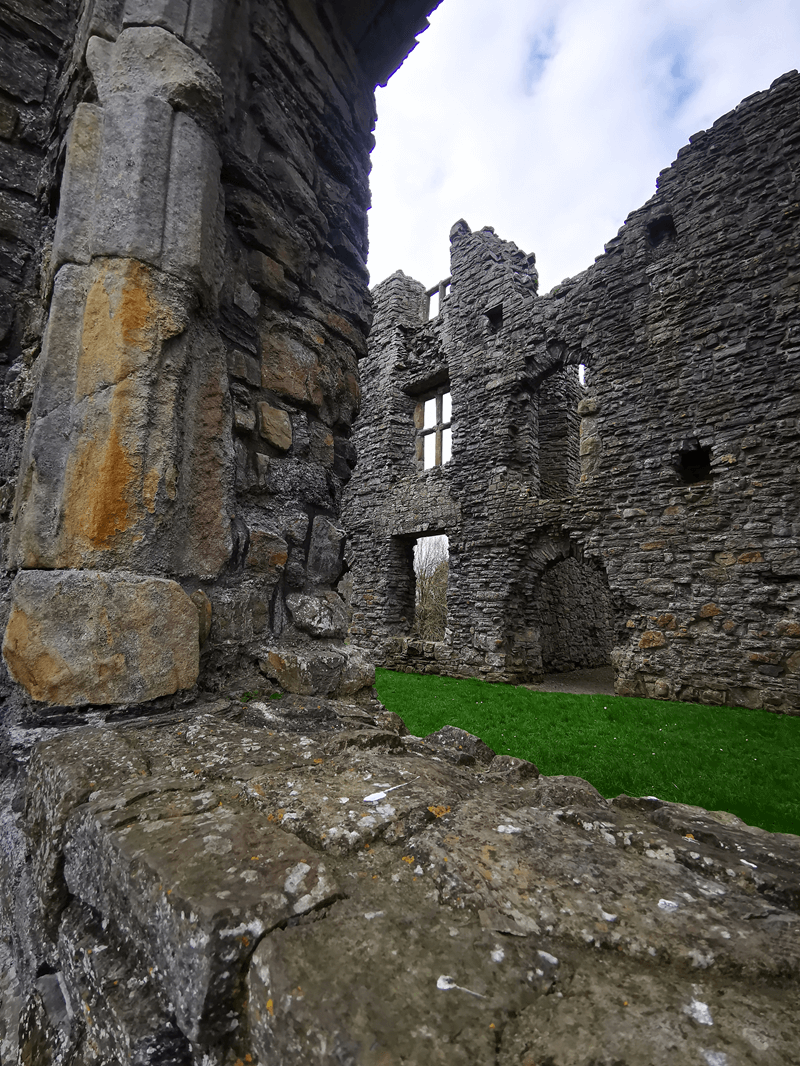 Differently from other Plantation buildings, this castle was built in the style of an Oxfordshire Manor House [5]. Many useful information about the architecture can be found in [3], where it is stated that the Castle was initially designed in a U-shaped floorplan, with a main rectangular block and two wings, but one wing has been completely removed, leaving an L-shape layout. The structure has three storeys with a basement under the main block and still retains chimney stacks and mullioned windows [3, 6, 7]. A gatehouse is also present, which includes two rooms on both sides of a vaulted passageway, displaying the Caulfield coat-of-arms [3]. Interestingly, in [3] and [7] it is stated that the gate house could have belonged to an earlier O’Donnelly bawn present on the site. In particular, a joist from one of the walls was dated using dendrochronology to about 1282 and may belong to an earlier fort [5].
Differently from other Plantation buildings, this castle was built in the style of an Oxfordshire Manor House [5]. Many useful information about the architecture can be found in [3], where it is stated that the Castle was initially designed in a U-shaped floorplan, with a main rectangular block and two wings, but one wing has been completely removed, leaving an L-shape layout. The structure has three storeys with a basement under the main block and still retains chimney stacks and mullioned windows [3, 6, 7]. A gatehouse is also present, which includes two rooms on both sides of a vaulted passageway, displaying the Caulfield coat-of-arms [3]. Interestingly, in [3] and [7] it is stated that the gate house could have belonged to an earlier O’Donnelly bawn present on the site. In particular, a joist from one of the walls was dated using dendrochronology to about 1282 and may belong to an earlier fort [5].
Castle Caulfield (sometimes also known as Ballydonelly Castle [7]) today is a State Care Historic Monument since 1938 and is listed in the Northern Ireland Sites and Monuments Record [2, 3].
References
- [1] The Irish Aesthete, The Fairest Building I Have Seen
- [2] Wikipedia, Castle Caulfield
- [3] Irish Heritage News, Exploring Castle Caulfield: Toby Caulfeild’s 17th-century mansion in Tyrone
- [4] Genuki, Castlecaulfield
- [5] Ancient Clans, Castle Caulfield
- [6] Irelandseye.com, Castle Caulfield, County Tyrone
- [7] Castles.nl, Castle Caulfield
Other useful links
- Northern Ireland Department for Communities, Castle Caulfield
- Centre for Archaeological Fieldwork, Queen's University Belfast, Excavations at Castle Caulfield
- Castlecaulfield, Co. Tyrone, E. M. Jope, Ulster Journal of Archaeology, Third Series, Vol. 21 (1958), pp. 101-107
- Wikipedia, Toby Caulfeild, 1st Baron Caulfeild
- Wikipedia, James VI and I
- Wikipedia, Plantation of Ulster
- Wikipedia, Flight of the Earls
- Wikipedia, Irish Rebellion of 1641
- Wikipedia, Oliver Plunkett
- Wikipedia, John Wesley
